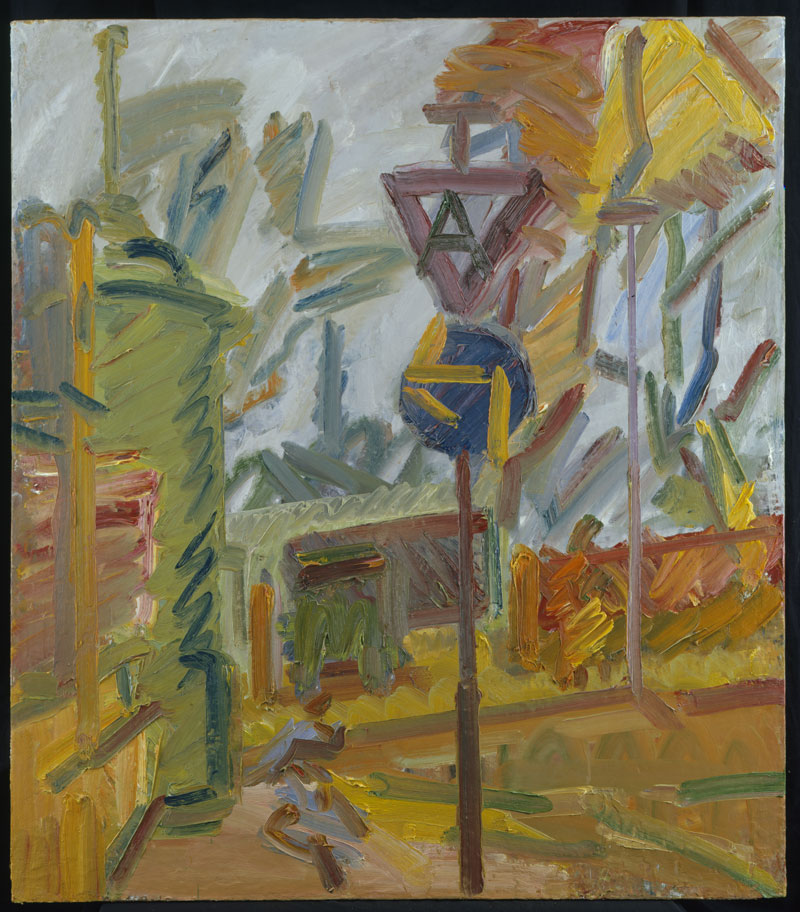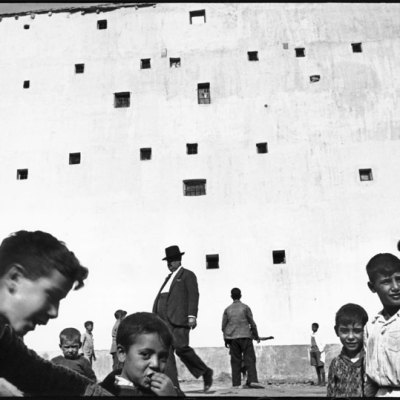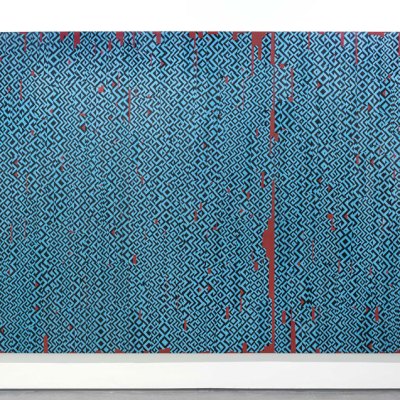A few years ago, I was stuck in a stranger’s car, barrelling down the M40 towards home in brilliant sunshine. In my hungover state, I neglected to keep track of where I was, and the landscape – motorway cutaways followed by the odd glimpse of green fields – gave no hint. But then the car tore up a slope, and in a basin below us sat London, with a cover of clouds spitting down rain. I’d never thought about it before, but seeing it laid out there in front of me suddenly made me realise that the city was built in a bowl, a piss pot for the elements. It doesn’t always rain here, but god does it feel like it.
One writer – I forget who – claimed that London air was heavier than the atmosphere elsewhere. You could be forgiven for agreeing in the present climate. A leaden sky hung over the London basin all weekend, making no discrimination between Victorian terraces and shiny Terry Farrell showpieces.
It was, in short, perfect Auerbach weather, which shows some possibly serendipitous foresight on the part of the capital’s exhibition programmers. There are two notable Frank Auerbach exhibitions on at the moment: Tate Britain’s astonishing retrospective (until 13 March 2016) and Marlborough gallery’s necessarily less ambitious but extremely satisfying round-up (until 21 November). Both show London up as the schizophrenic monster it is, and indeed was.
One of the earliest paintings in the Tate show, Building Site, Earl’s Court Road, Winter, is at first remarkable for its sheer weight. The impasto here is thick as a bicycle tyre. Auerbach considers it the moment he came into his own:
‘I had made some shapes that seemed to conjure up a coherent, plastic fact, and I felt I had done my own painting. I didn’t know whether I would ever be able to do it again, but I knew what it felt like’.
It is a composition formed of dark but distinct shapes. So dark, in fact, that it is barely discernible. Critics have described it as an abstract painting; I don’t agree. A few days after my revelatory moment in that car, I spoke to one Royal Academician about his arrival in London in the 1970s. The Paddington bedsit he moved into was caked in inch-thick soot, and the city had a distinctive and all-pervasive smell that has, thankfully, been consigned to memory.
While the smart, polished London of today, is (sort of) visible in Auerbach’s paintings of Hampstead Road and Park Village East, the artist’s paintings from the 1950s capture the Smoke as it once was, in all its filthy drabness. The oil paint is heavy as lead, and depressing as the prospect of a night bus home from East Finchley.
I devote this much space to Auerbach because, except for Kossoff, nobody paints London’s ever-changing whirl quite like Frank Auerbach. He somehow manages to distil the weight of the city into his landscapes; his cityscapes can’t help but remind me of a passage from Maureen Duffy’s criminally underrated 1983 novel Londoners:
‘Pausing on the kerb I fill eyes and lungs with bright, lead laden air that shapes itself round my ribs to make a casket for my thudding heart. The flags in the square hang damp tea towels in an element not brisk enough to stiffen them.’
This is Auerbach’s city. We just live in it.
◎
What I liked elsewhere this week: Fred Sandback at Sims Reed gallery (until 11 November). Like Auerbach, Sandback was interested in the fundamental principles of drawing. He was best known for the sculptures he made from strands of coloured wool, astonishingly simple but marvellously effective things. They force you into completely reconsidering the space around them – a simple trick that is among the most revelatory in the Minimalist canon. This exhibition of his prints shows it off to maximum effect. It’s extraordinary how a simple white line stretched over a sky blue background can be so effortlessly evocative; pause and think about these works and be left dumbstruck.
◎
What I didn’t like: Subodh Gupta’s When Soak Becomes Spill outside the V&A (until 31 January 2016). We all know the moment when liquid froths into effervescence, and Gupta’s shiny pitcher sets out to distil it. But this stainless steel giant feels too laboured an attempt to capture temporality. Instead of immortalising the ephemeral moment, it inhabits its space like any old bit of mediocre public art. Despite its size, it’s also curiously easy to miss. The Saturday morning crowds bustling by seemed completely oblivious to it. It apparently alludes to ‘wastage of the world’s natural resources’. Forgive me, but I wonder whether it doesn’t embody a different sort of wastage entirely.





